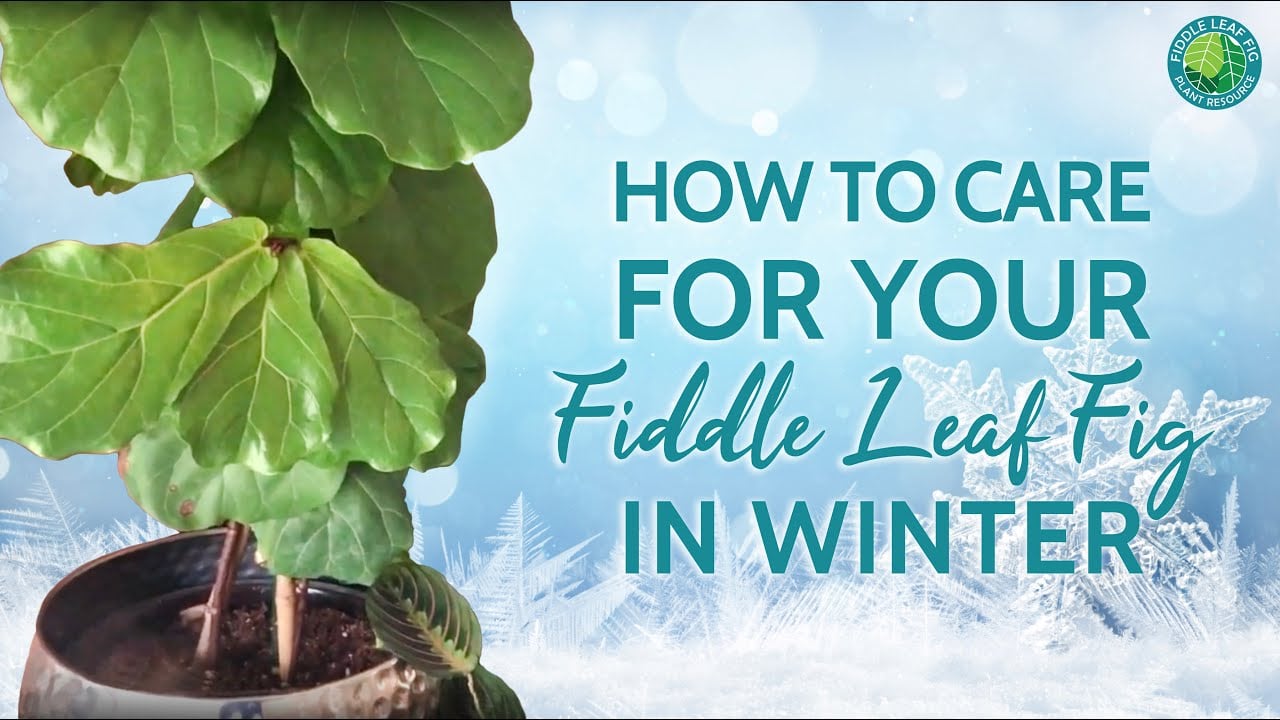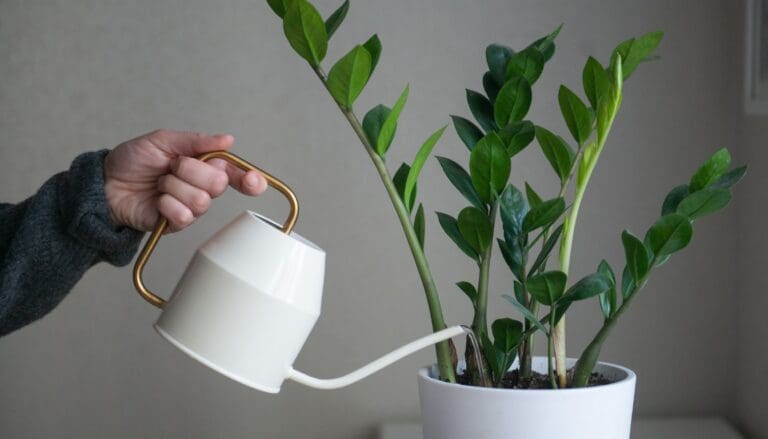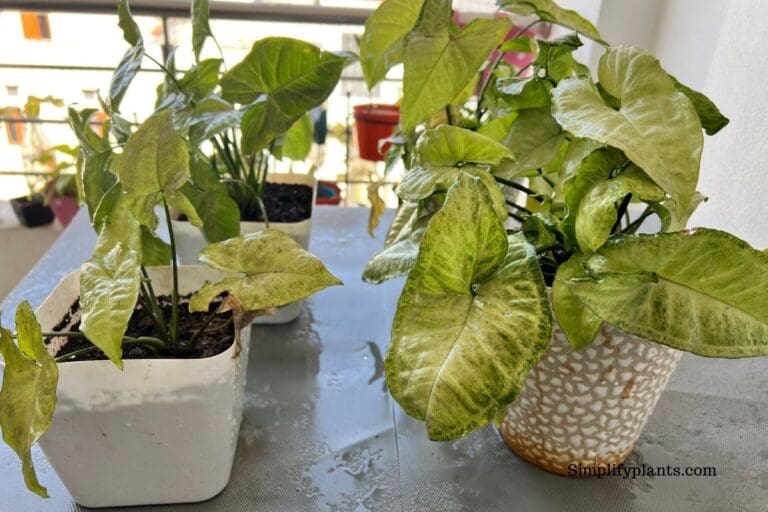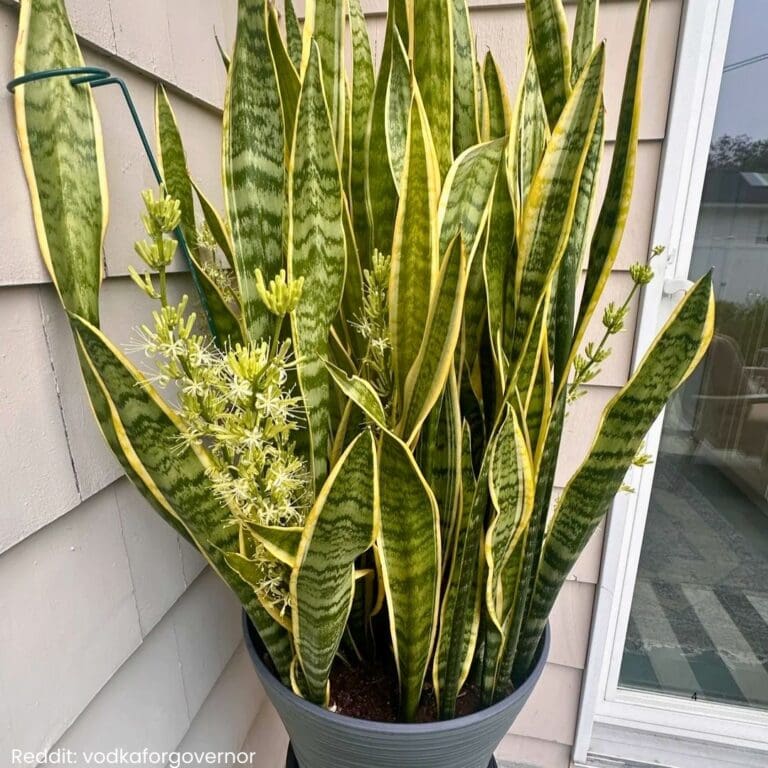How Do You Take Care Of A Fiddle Leaf Fig In The Winter?
Fiddle leaf figs (Ficus lyrata) enjoy warm and bright weather and a lot of humidity. Winter is not the best time for these plants as the temperature and humidity levels drop, and you need to be more careful than the other seasons of the year.
Fiddle leaf figs don’t grow actively during the winters as this is the dormant season for these plants. Winter care of fiddle leaf figs is different so keep reading to learn about all the factors you need to keep in mind. With that said, here is a simple winter care routine that you can follow.
To begin with, make sure that the fiddle leaf fig gets ample indirect light and sufficient water. It would be best if you stop fertilizing the plant during winter. Try to maintain a stable temperature and humidity so that the plant doesn’t get stressed. And keep the plant away from cold drafts.
We will discuss more about some common problems that fiddle leaf figs go through during the winter season and how we can deal with them. We will also discuss more about the light, water, and other requirements of fiddle leaf fig during the winter months.
Please note: Simplify Plants is reader-supported. Some links in the post are affiliate links and I get a commission from purchases made through links in the post.
Can fiddle leaf fig survive winter?

Fiddle leaf figs slow down their growth during the winter months. Outdoor fiddle leaf figs undergo dormancy during the winter months and don’t require any special care.
But when you have an indoor fiddle leaf fig, it will need some extra care or some changes in the regular care routine to survive winter.
For example, you need to keep the fiddle leaf fig away from cold drafts and use a humidifier to provide enough humidity to the plant.
Check the moisture level of the soil before watering the plant. Don’t repot the plant during these months. You can use a simple hygrometer to keep track of the humidity around your plants.
Keeping a check on all the crucial factors and taking the correct measures will let your fiddle leaf fig survive without any difficulty.
How cold is too cold for a fiddle leaf fig?
The fiddle leaf figs are native to African rainforests, where they are exposed to hot and humid climates.
As an indoor plant, fiddle leaf figs thrive at a temperature of 65-75°F. If the temperature drops below 50°F, the plant starts having problems and shows signs through browning of leaves.
Common problems of fiddle leaf figs in winter
Fiddle leaf figs don’t remain active in winter. Their growth slows down, and they go into the dormant phase.
Fiddle leaf figs are sensitive plants that do not like changes. And winter comes with temperature and humidity changes that can cause problems in your plant.
Let’s take a look at some of the common problems that fiddle leaf figs face during winter.
- Slow growth
- Leggy growth
- Drooping leaves
- Overfertilization
- Overwatering
Slow growth

Slow growth is typical during the winter months and is not a problem.
Many beginners don’t know this and start getting worried when they see no growth in their plant. Wait for the season to change, then you will see growth again.
Leggy growth

A leggy plant looks long and weak. It grows very tall, and the branches have very few leaves on them.
Fiddle leaf figs tend to get leggy during the winter as the plant does not get enough light. Lack of sunlight causes leggy growth.
Drooping leaves

Fiddle leaf figs don’t appreciate cold drafts. Cold drafts are damaging and make the plant dry.
If your plant is exposed to cold drafts, you will notice drooping leaves on the plant.
Over-fertilization

Fiddle leaf figs don’t grow during winter, and fertilizers are required to help the plant grow.
Many fiddle leaf fig owners make the mistake of fertilizing the plant even during the winter months.
Since the plant remains dormant, the fertilizers don’t get used up. It remains in the soil and burns the roots.
You don’t need to add any fertilizer to your fiddle leaf fig during winter.
Overwatering

The water requirements of the plant usually reduce during winter that most plant owners are not aware of.
If the fiddle leaf fig is given the same amount of water during the winter, it will lead to overwatering and other related problems such as brown leaves and root rot.
Fiddle leaf fig winter care
Let’s take a look at all the factors and understand the changes that you need to make in your plant care routine for the winter.
Light

The fiddle leaf fig usually needs bright and indirect light for at least 6-7 hours every day.
During winters, the intensity of the light decreases. And the duration goes down along with it. There are a lot of days when there is no sunlight as the weather becomes cloudy and gloomy.
So, the fiddle leaf fig might not get enough light that causes many problems such as drooping leaves and stress.
If the plant is not getting natural light, you can get some artificial light to combat this.
There are many artificial lights available in the market that help the plants get enough sunlight.
Also read: How much light do fiddle leaf fig need?
Water

Winter is the dormant period for the fiddle leaf figs, and they don’t grow during this time.
Therefore, their water requirement drops down during this time. It would be best if you refrained from watering the plant, like other times of the year.
In winter, the soil takes longer to get dry. This is another reason that can cause overwatering issues if you are watering the regular way.
Forget the watering schedule in winter and check the soil before watering the plant.
You can use a moisture meter or stick your finger inside the soil to understand the moisture. Don’t water if the soil feels wet or moist.
Ensure that the pot’s drainage holes are working well so that the excess water can get drained after watering.
Also read: How often should I water my fiddle leaf fig?
Fertilizer

Just like water, the requirements of fertilizers also change during winter.
The growth of the plant slows down or stops during winter.
Fertilizing, like the other times of the year, will have a fertilizer build-up in the soil that will burn the roots.
So if your fiddle leaf fig is not showing any growth, you should stop fertilizing altogether in the winter.
Also read: Do fiddle leaf fig need fertilizer? How often?

Fiddle leaf figs are humidity-loving plants. They thrive when they get a lot of moisture.
The humidity level drops drastically during the winter, which can lead to many problems in the plant.
But there are a lot of ways to increase the humidity for your fiddle leaf fig.
Use a humidifier, a machine used in many houses, to increase the humidity in the room. Using a humidifier is a great way to increase the humidity level of your plant.
You can use a pebble tray if you don’t have a humidifier. Take a tray and add pebbles or small stones to it, then add water. Place the plant on top of the tray. As the water evaporates from the tray, it will add moisture around the plant.
You can also group the fiddle leaf fig with other plants. Plants release moisture when they transpire, and this will increase the humidity level around that area.
Keep your fiddle leaf fig in an area of the house that gets a lot of humidity. For example, if your bathroom gets enough light, you can keep the fiddle leaf fig there. The moisture coming out of the shower will help increase the humidity.
Also read: Should I mist my fiddle leaf fig?(+ maintaining ideal humidity)
Temperature
The fiddle leaf figs are native to the tropical rainforests of Western Africa, where they get a warm and humid climate.
Fiddle leaf figs appreciate consistency even in terms of temperature. The ideal temperature for the fiddle leaf figs is between 65-75°F.
Any temperature below 50°F is not ideal for these plants as they do not do well in lower temperatures.
During winter, the temperatures can get low so, here are some points that you should keep in mind.
- Keep your fiddle leaf fig away from the window when the temperature gets very low and when there is no light.
- Do not expose the plant to cold drafts as that can be very harmful to the plant.
- Don’t place the plant near a fireplace or any other heating source as that can burn the leaves.
If possible, try to maintain a temperature between 65°F-75°F.
Clean the leaves

The leaves of the fiddle leaf figs are large and can have a lot of dust on them. So cleaning the leaves of the plant is necessary to let the plant absorb maximum light.
Dust build-up can block the leaves from absorbing the light. In winter, the light intensity reduces. Clean leaves will help in the absorption of light.
You can use a wet cloth to wipe the leaves of the fiddle leaf fig to keep the dust away.
Also Read: How To Clean Fiddle Leaf Fig Leaves? (What To Use+How Often)
Repotting

Fiddle leaf figs love to remain in the same pot, but that can lead to a rootbound plant when the roots outgrow the pot. And that is when you need to report the plant.
However, don’t consider repotting in winter.
Fiddle leaf figs are sensitive to changes. And they don’t remain active during the winter months. All these can lead to shock if you are repotting it during winter.
Repotting is ideal during the spring or summer months, and the plant needs a lot of care after repotting so that it can recover. In winter, it may not recover due to the shock and the extreme weather conditions.
Also Read:
Pruning

Leggy growth is expected in winter due to insufficient light, and you should get rid of the leggy growth in the plant so that the plant can grow back normally.
Use a sterilized and sharp pair of scissors or pruners to prune the leggy parts. Make clean cuts on the plant.
Note: Use gloves or wash your hands thoroughly after pruning the plant.

Final Words
Let’s take a look at the highlights of what we have learned.
- Use artificial lights if the fiddle leaf fig is not getting enough natural light.
- Check the soil moisture before watering, and don’t follow the same watering schedule you usually do.
- Stop adding fertilizers or add less than usual depending on the growth of the plant.
- Keep the plant away from cold drafts and heating sources.
- Use a humidifier or pebble tray or group it with other plants to increase the humidity level.
- Keep the leaves clean by wiping them with a wet cloth so that the plant can absorb the light.
- Don’t repot the plant in winter. Do it in spring or summer.
- Prune the leggy growths.
Sources: CABI.ORG, New York Botanical garden, University of Florida.
Recommended Garden Supplies
| Product Image | Our Recommended Gardening Supplies | Check Offers! |
|---|---|---|
Top Top
Top
Top
Top
Top
Top
Top
Top | rePotme Houseplant and Tropical Classic Potting Soil Mix | Check Offer On Amazon |
 Top
Top
Top
Top
Top
Top
Top
Top | Espoma Organic Indoor Plant Food | Check Offer On Amazon |
 Top
Top
Top
Top
Top
Top
Top
Top | GooingTop LED Grow Light 6000K Full Spectrum Clip Plant Growing Lamp | Check Offer On Amazon |
 Top
Top
Top
Top
Top
Top
Top
Top | Soil Moisture Meter | Check Offer On Amazon |
 Top
Top
Top
Top
Top
Top
Top
Top | Govee Hygrometer Thermometer, Bluetooth Enabled! | Check Offer On Amazon |
 Top
Top | LEVOIT Humidifiers for Large Room(Best For Plants) | Check Offer On Amazon |
 Top
Top
Top
Top
Top
Top
Top
Top | Upgraded DIY Automatic Drip Irrigation Kit, 15 Potted Houseplants Support | Check Offer On Amazon |
 Top
Top
Top
Top
Top
Top
Top
Top | Stainless Steel Heavy Duty Gardening Tool Set | Check Offer On Amazon |
 Top
Top
Top
Top
Top
Top
Top
Top | Bonide Insecticidal Soap | Check Offer On Amazon |
 Top
Top
Top
Top
Top
Top
Top
Top | Bonide 32 oz Spray Neem Oil for Organic Gardening | Check Offer On Amazon |
 Top
Top
Top
Top
Top
Top
Top
Top | Garden Safe Fungicide | Check Offer On Amazon |







